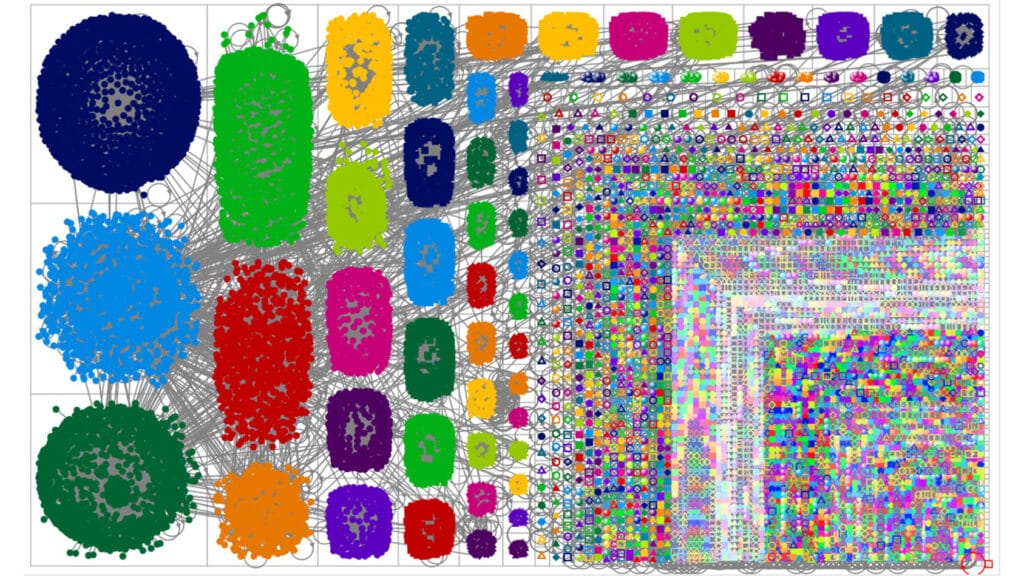This article focuses on the things to consider when designing a brand. Before we start we should remind ourselves what a brand is; it can be a product, service or an organisation, the most important aspect about a brand is its ability to be identified by its intended market (either through recognition or recall). Another important element of branding is the ability to be differentiated from the competition.
It is not just the visual aspects that provide the identification and differentiation elements needed to succeed in the market place, there are a range of other factors that must be considered. They are made up of the marketing mix and may include but are not limited to the Price, Promotion, Place, People, Partnerships, (Physical) Evidence and Processes (note, I have left out product because that needs to be associated with the brand). I am not going to go into the details of the marketing mix at this stage because I only want to consider those elements associated with branding design: the first of which is the naming of the brand.
The Brand.
For all intents and purposes the brand is the name you have selected for your product, service or organisation. I will argue that this is the hardest thing to do in the brand design process, once selected it will be very difficult to change (but not impossible, just think of Kentucky Fried Chicken, now known as KFC). Once you have selected a name you should see if it could be trademarked. This is a complex process and differs by country. Before starting the trademarking stage do a thorough search on your proposed name. This can be done by:
- Checking the availability of the associated URLs (use one of the many “Whois” checkers like www.whois.com to do this). The URL should be as close to the brand name as possible.
- Making sure that the intended name is still available as a Twitter handle or Facebook page.
- Finding out who else is using the name (or similar sounding names)? A simple review using Google will give you an indication. In the UK you can log on to Companies House to see what has already been registered.
- Translating the intended name. If you don’t have the money to do a detail search then use Google Translate, it can detect possible options. In the example illustrated in figure 1 you can see that the word “Zumbi” has been detected as Portuguese and translates into “Zombie”. You may think that this would be inappropriate if you are looking to sell it in Portugal. You should also click on the “Listen” icons and do another iteration of the process on the pronunciation, for example “Oui” is “Yes” in French and is pronounced “We”: this may not be appropriate particularly if it were a bottled drink!

Figure 1: Google Translate
Ideally the name should be distinctive and easy to remember. Many brands have gone down the route of fabricating a name, probably the most famous of all is Google. Another option is to consider an acronym: BBC, KFC and IBM are some good examples. Unfortunately there are now so many of these types in use that it will be difficult to get any form of registered protection (with the exception of the Trademark logo design). Founders and creators are also used to develop the name examples include Marks and Spencer, Ben Sherman and Ben & Jerry’s. Again these will be difficult to gain rights protection. You could consider a misspelt name like Citibank, Creme Eggs or Playskool. Alternatively bring together elements of everything I have just said to create some thing different.
Colour Coding
Colour is an important part of any brand, there is a great deal of research that has looked specifically at Colour Psychology, rather than go through that aspect in detail I would like to reinforce how colour can be used to express the character of a brand. Take for instance Tesco (a large grocery store in the UK), who have a range of own brand products: at the two ends of its spectrum we can see the “Everyday Value” range and the “Finest” range. The “Everyday” value range uses a white background with variety of colours to support it (See figure 2). The “Finest” range uses a black background with silver writing giving a regal feel (see figure 3).

Figure 2: Tesco’s Everyday Value
Consumers do become accustom to a brand’s colours and they can very quickly associate it to a particular product / service even without seeing the name or logo. Take for example Facebook, I am almost certain that most people will be able to pick out the correct Facebook shade of blue in figure 4. Try it yourself, (the answer will be at the end of the blog).
Now try the Coca Cola version (see figure 5), which is the correct red associated to that brand? (The answer will be at the end of the blog).

Figure 5: Which one is Coca Cola’s Colour?
So hopefully you can see how important colours are to a brand’s identity. The most important thing you can do when managing a brand is to make sure that the business knows the exact pantones being used for each colour of the brand. You probably wont be surprised to hear that I have worked with a number of organisation that don’t have this in place: as a result it causes big problems with their brand imagery.
Key Audio
Brands that use mass media advertising may want to consider having some form of key audio associated with it. This aspect of branding is not widely used, but what I will say is, it can be a great way of getting people to remember your brand. This is done through the “ear worm” concept (a catchy piece of music that goes round your head). McDonalds have got the “I’m lovin it” tune, Danone have the “emm Danone” tune, even Intel (a B2B product) has a tune associated with it.
Key Visuals
The key visuals for a brand are made up of the brand signature (see figure 6). This signature is “the structured relationship between the logotype, brandmark and tagline”. (Wheeler, 2009, p50)

Figure 6: Brand Signature.
Not every brand has to follow this format (see figure 7), many of the global brands are strong enough to exclude the logotype. We can also see that Fast Moving Consumer Goods (FMCG) sold in supermarkets develop other key visuals through their packaging.

Figure 7: Global Brands.
The brandmark or logo for your product, service or organisation is probably the most important because as I stated earlier individuals will only buy or use your brand if they are motivated to do so. To be motivated they need to be able to recognise or recall the brand: the brandmark will play a big part in this. Figure 8 illustrates examples of some famous global brands. Sometimes the brandmarks used are just the logotype: figure 9 illustrates this.

Figure 8: Brandmarks.

Figure 9: Logotype.
Uniqueness
Every brand needs a USP (Unique Selling Point) to distinguish and differentiate it from its competitors. You may find that you need to change it after a few years because the competition has caught up with you. It does not have to be a physical feature, it could be a service aspect that the competition cannot achieve. You may be asking what uniqueness has to do with brand design, well sometimes the differentiator is a form of audio visual. Take for example the insurance comparison sites in the UK (see figure 10), three of the four use some form of mascot to create their uniqueness.

Figure 10: Brand Uniqueness
Values
The values that a brand adopts will help with its positioning. In theory these values are what your customers will (or should) experience when they come into contact with the brand. In most cases it is quite difficult for every brand to display all its values, although there are brands like Innocent that can do it. It is useful to have the values listed when developing your brands, so that the final design does not compromise them. As an example an eco brand is likely to have some form of green colour theme going through it. You may have also noticed that many medical and pharmaceutical brands have clinical colours (whites and light blues) associated with their websites, others colours are just not appropriate.
Target
Before starting the process of branding, you also need to know exactly who you are targeting. Your colours, logos and fonts will be greatly influenced by your intended market. Like the Values, this target will also help in the brand positioning. As an example the imagery used for Saga Insurance (targeting the over 50s) will be different to Fat Face (a lifestyle clothing and accessories retailer targeting a young audience)
Positioning
Positioning is a way for your brand to select which ballpark it is going to play in. The positioning will shape your marketing mix, if we go back to the two Tesco examples (figures 2 and 3) you will not surprised to see that the “Everyday Value” brand targets those customers looking for products at the cheaper end of the scale, whereas the “Finest” brand targets those who are will to spend a bit more, so the designs are set to reflect this.
So there we have it a very quick example of what you need to consider when designing (or redesigning) a brand. Look forward to my next article which will build on this subject and demonstrate what to include when developing your brand book. By the way the Facebook colour is C and the Coca Cola colour is A.
Reference:
Wheeler, A. (2012). Designing brand identity: An essential guide for the whole branding team. Wiley.
Alan Shaw
Latest posts by Alan Shaw (see all)
- What is social listening and why it is an important tool for researchers? - July 31, 2021
- COVID-19 and Remote Learning: Experiences of parents supporting children with SEND during the pandemic. - June 30, 2021
- Using Netnography To Evaluate The Launch And Collapse Of The European Super League - April 21, 2021
- Developing Semi-Structured Interview Questions: An Inductive Approach. - April 9, 2020
- Developing Semi-Structured Interview Questions: A Deductive Approach - April 9, 2020

















